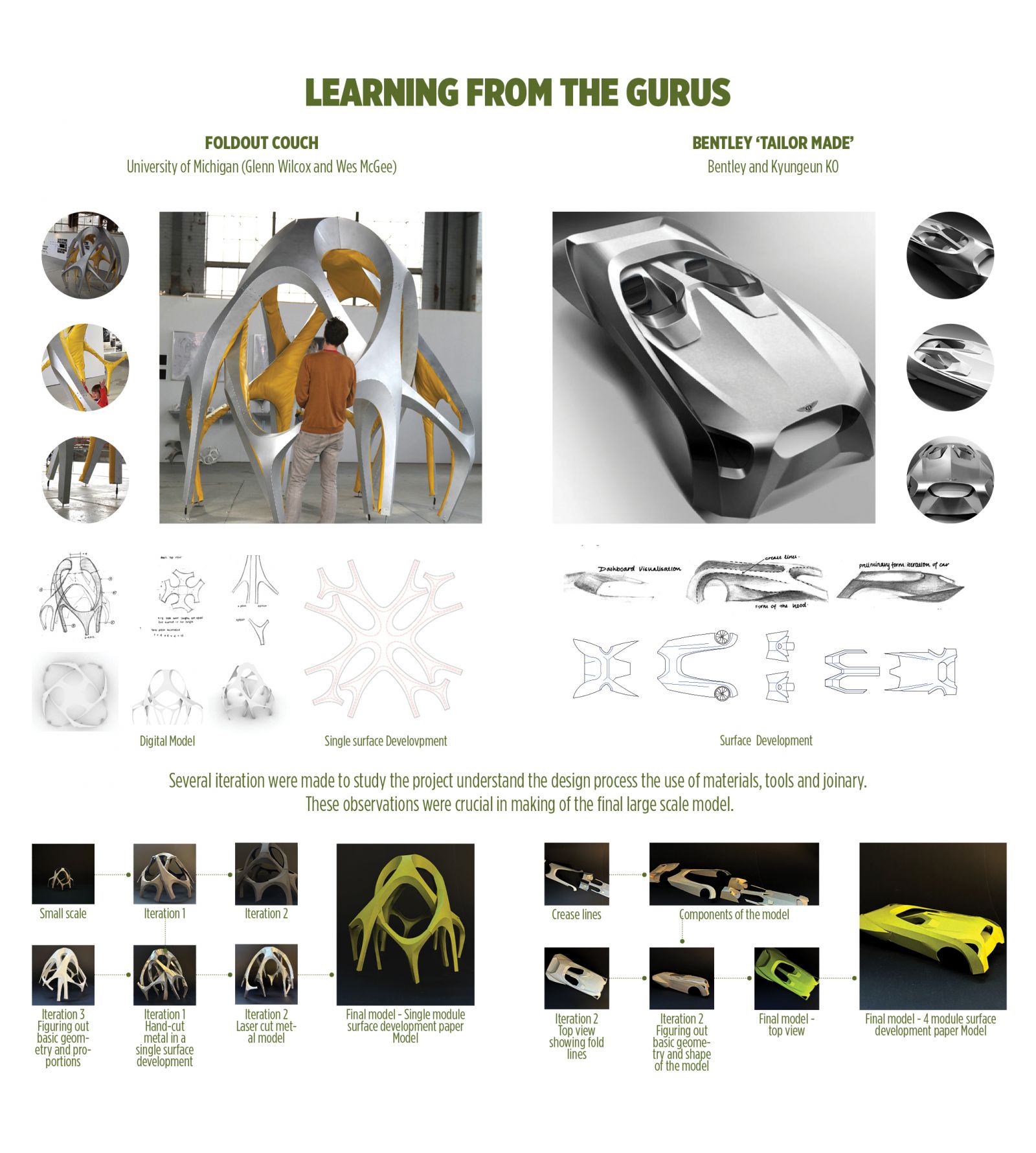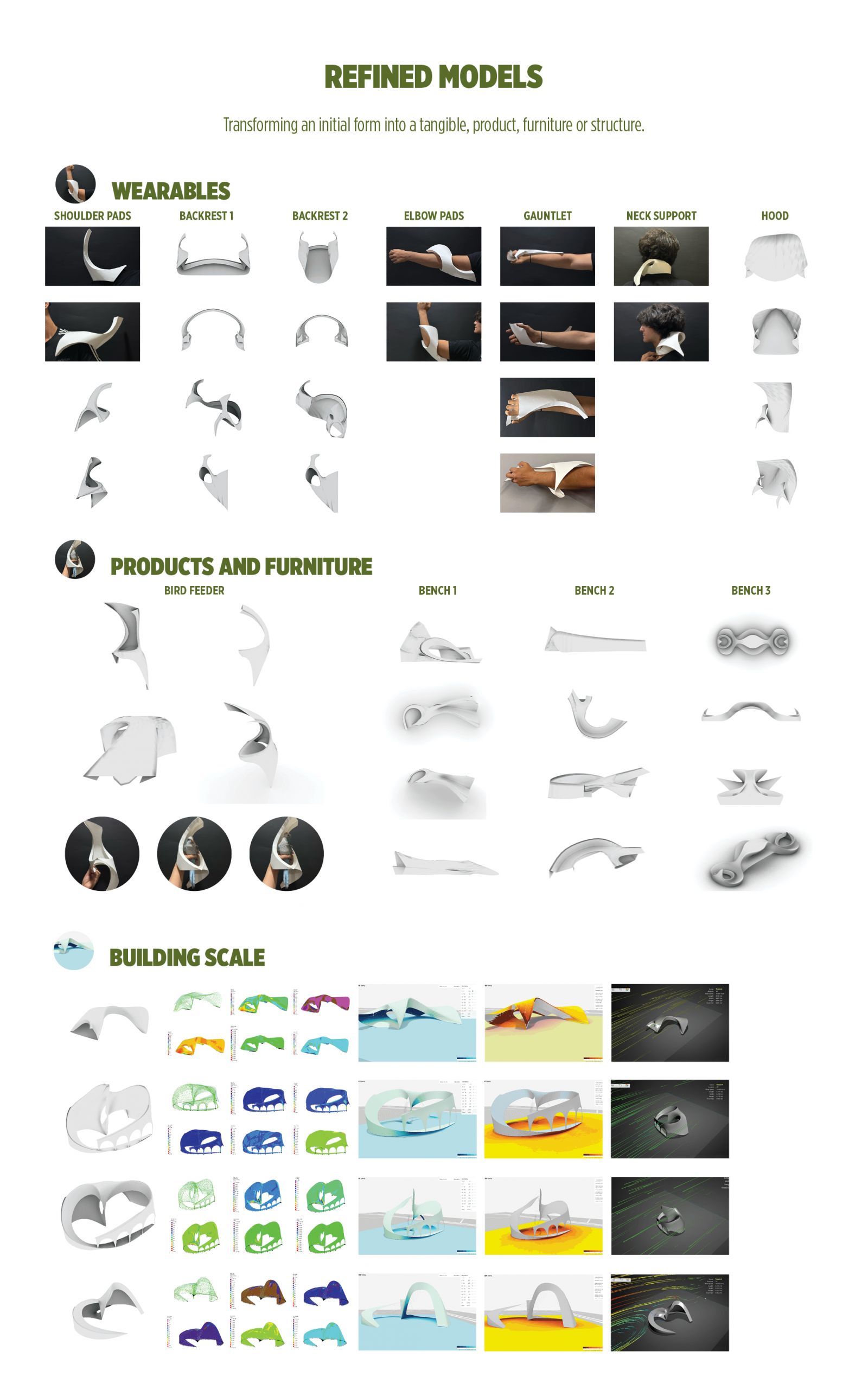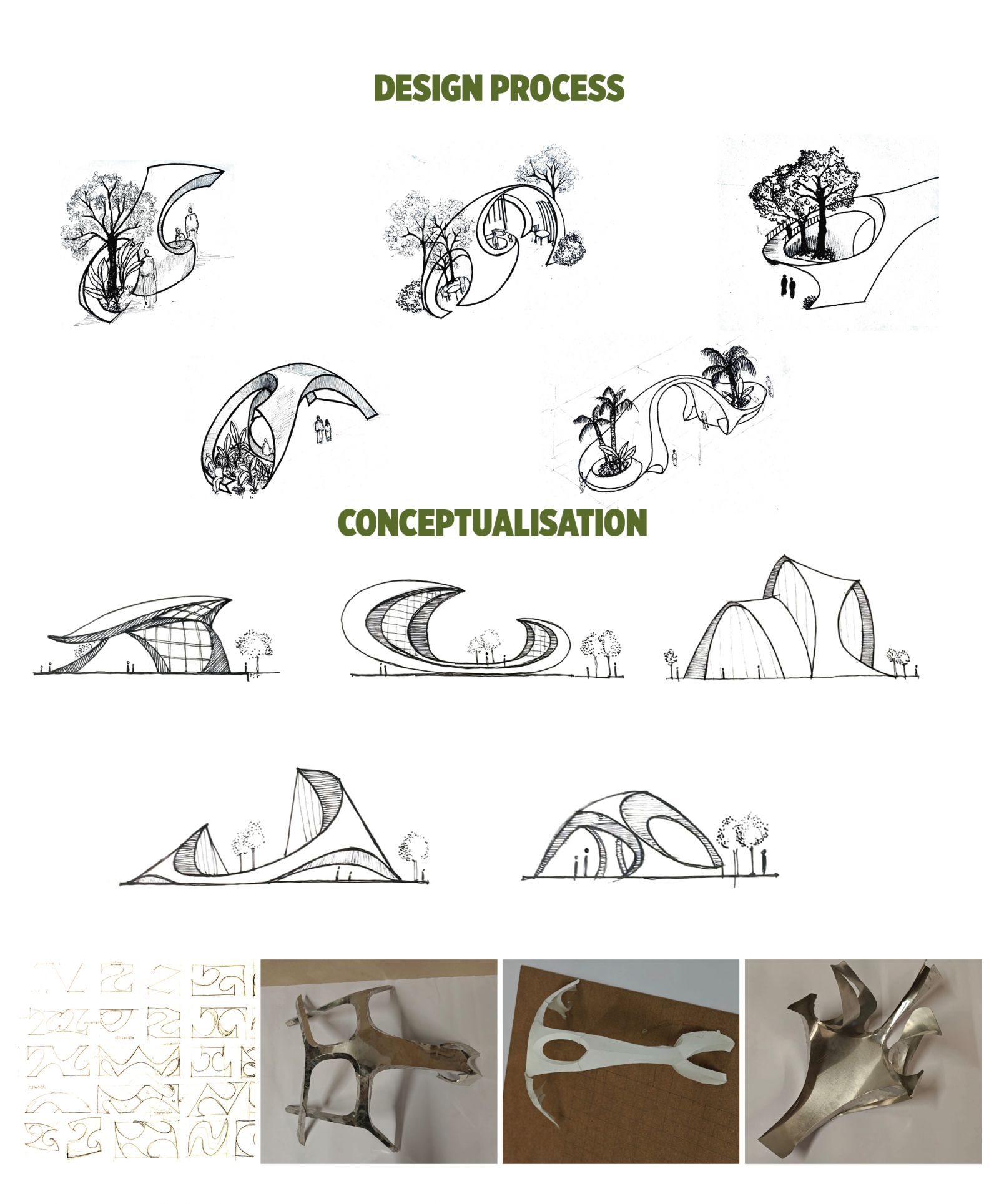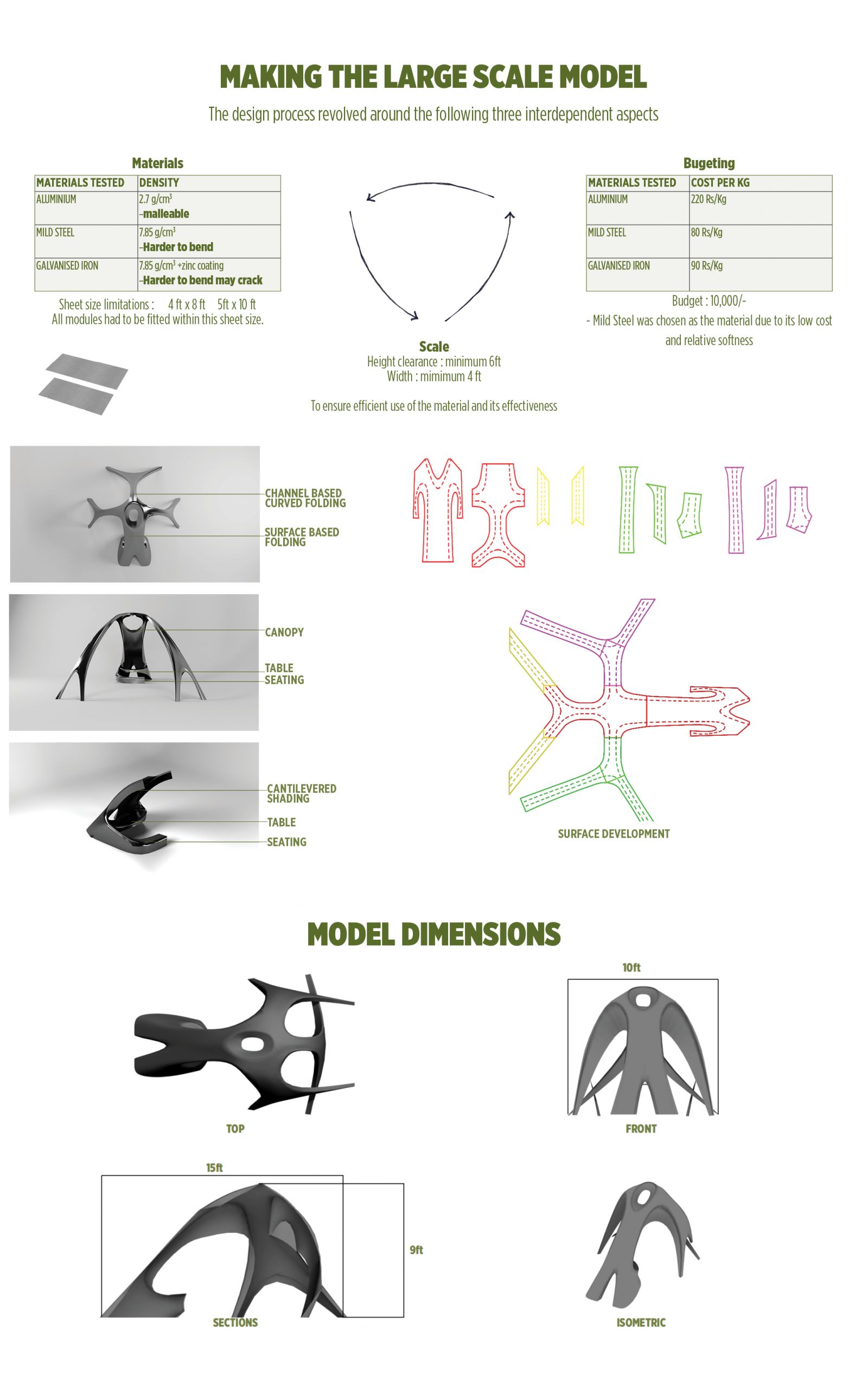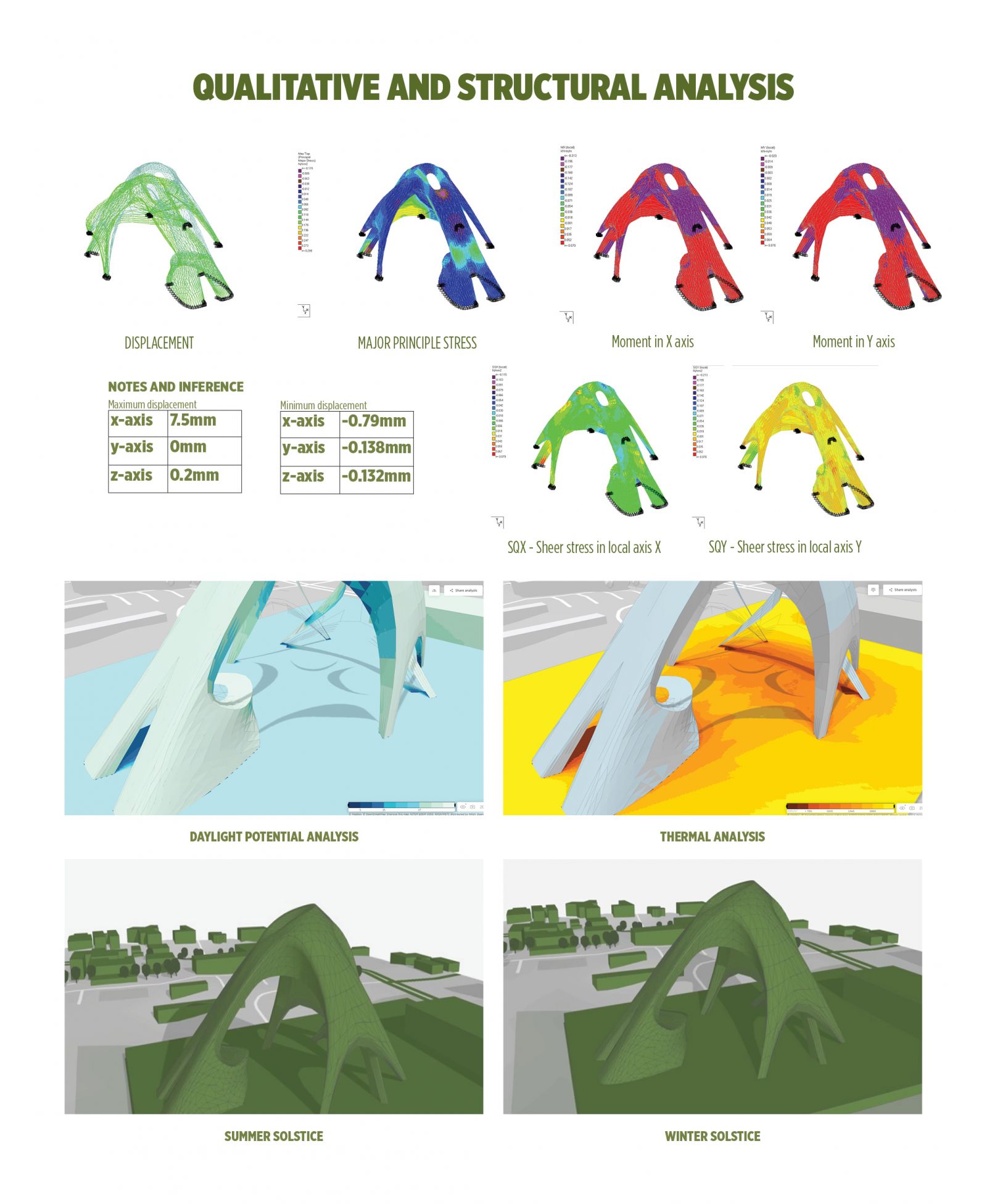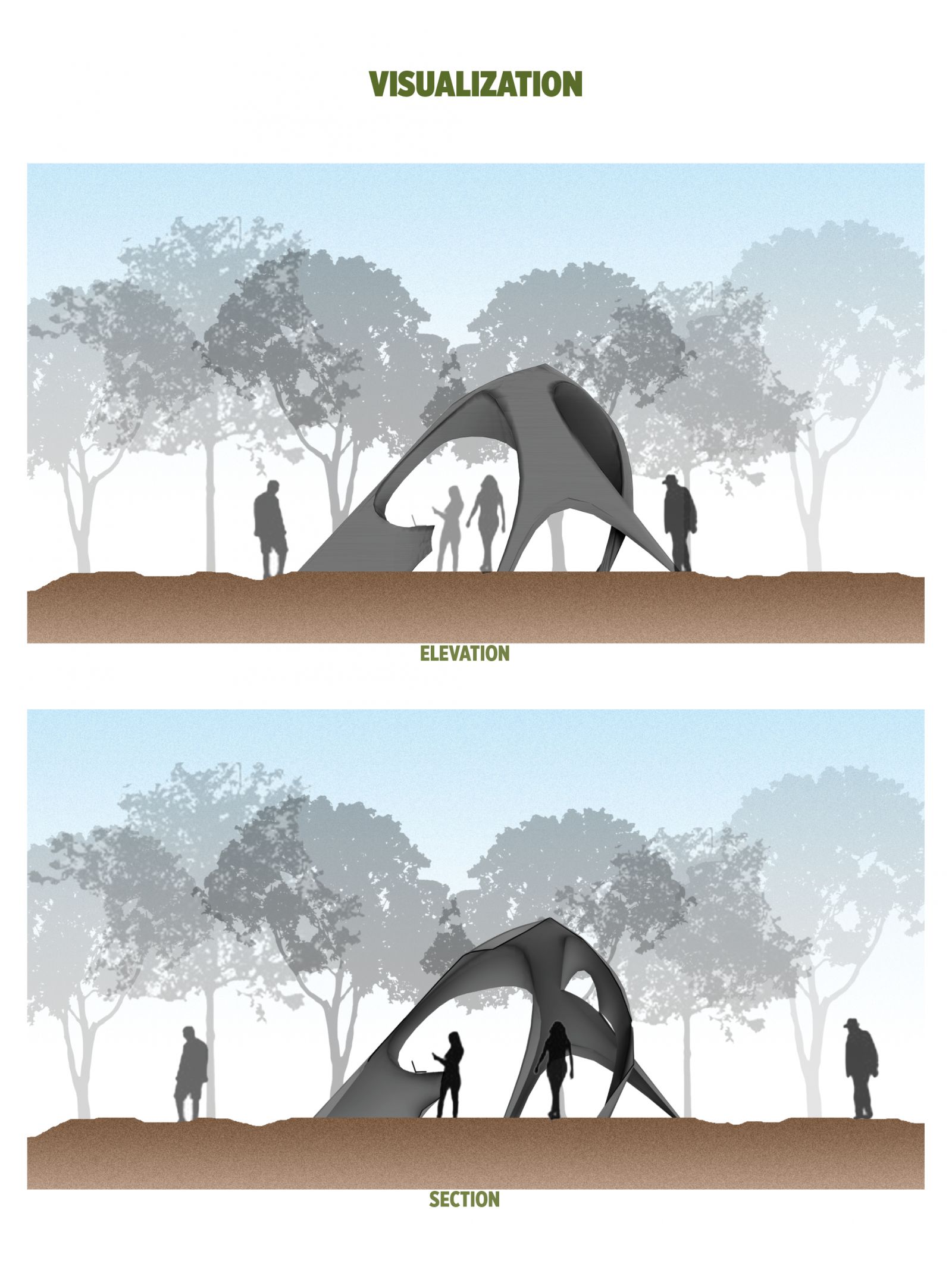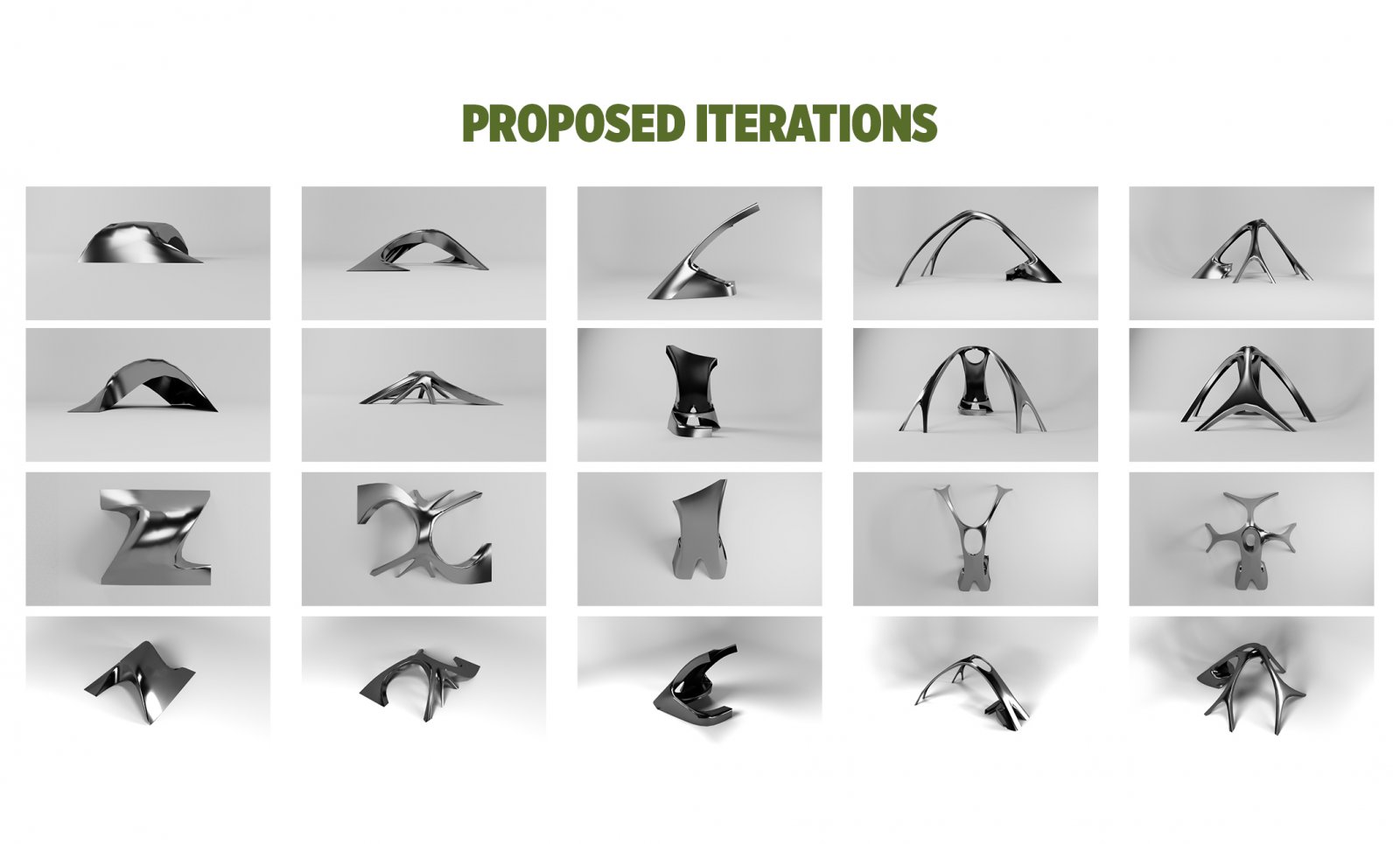Your browser is out-of-date!
For a richer surfing experience on our website, please update your browser. Update my browser now!
For a richer surfing experience on our website, please update your browser. Update my browser now!
Rooted in structural sciences and reinterpreted through the lens of design, this studio embraces the legacy of physical forces as an active agency in the design process. Inspired by the ideologies of learning by making, thinking through hands, and expanding possibilities through digital modelling this project explores the technique of curved crease folding.
The project focused on form-finding through an understanding of folded systems, structural geometries, and the interplay between form and forces. Forms were then scaled to form products, wearables and structures. The final outcome was to design and execute a large scale prototype demonstrating this technique. The form was made with a 1 mm thick Mild Steel Sheet and put together by bolting and welding.
